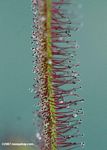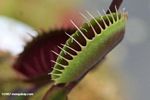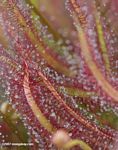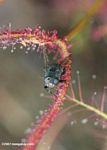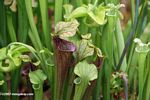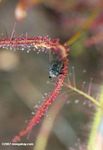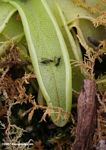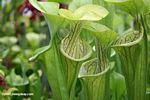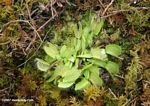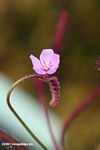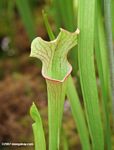Carnivorous plants invade San Francisco
Carnivorous plants invade San Francisco
But pose no threat to humans
mongabay.com
May 14, 2007
While most plants derive nutrients from soil, some trap and consume living creatures for their primary source of sustenance. Now a special exhibit at the San Francisco Conservatory of Flowers offers a journey into the strange world of carnivorous plants.
More than 600 species of carnivorous plants are distributed across the globe, including dozens of species in the United States. Probably the most famous of these — thanks to comic books and Little Shop of Horrors — is the Venus Flytrap, found only in North and South Carolina. The Venus Flytrap is one of only a handful of plants that are capable of rapid movement. When triggered by touch, the plant rapidly snaps shut its trap trapping, with luck, a hapless insect. The insect is then digested, providing the plant with nitrogen, phosphorus, and other nutrients.
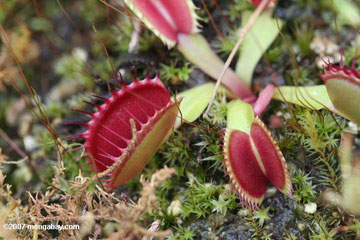
Venus flytrap. Photo by Rhett A. Butler |
Like other carnivorous plants, the Venus Flytrap generally grows in poor soils that are acidic or nitrogen deficient. The structure of some carnivorous plants depends on their surrounding environment. Poor soils will favor the development of insect trapping mechanisms, while better soil will favor conventional structures for nutrient uptake.
Most carnivorous plants take a more passive approach to capturing prey. Pitcher plants, found all over the world, let gravity do the work. Using colors, nectar, and odors to entice insect prey, pitcher plants use a liquid-filled cup to trap insects that lose their balance on the plant’s slippery lip. Once trapped in the liquid the insect is slowly digested, sometimes with the help enzymes or symbiotic bacteria. The pitcher plant derives nitrogen, phosphorus, and other minerals from the prey.
Popular house plants but threatened in the wild
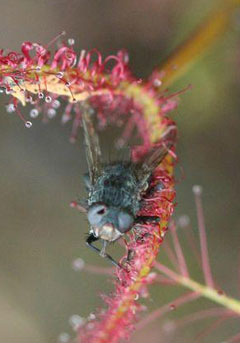
Fly trapped in the sticky flypaper-like tentacles of the sundew. Photo by Rhett A. Butler |
While carnivorous plants have long been kept as house plants, they are increasingly threatened in the wild due to habitat destruction. In the United States it is estimated that 95 percent of wetlands suitable for insect-eating plants have been destroyed by pollution and development, including golf courses, housing, agriculture, and plantations, according to the Conservatory of Flowers.
Currently on exhibit
The carnivorous plant exhibit is on exhibit through November 4, 2007 at the San Francisco Conservatory of Flowers in Golden Gate Park. It features education displays, hands-on activities for children, and, of course, dozens of species of carnivorous plants including the Venus Flytrap, sundews, bladderworts, trumpet plants, pitcher plants, and butterworts. For more information please visit the Conservatory of Flowers
